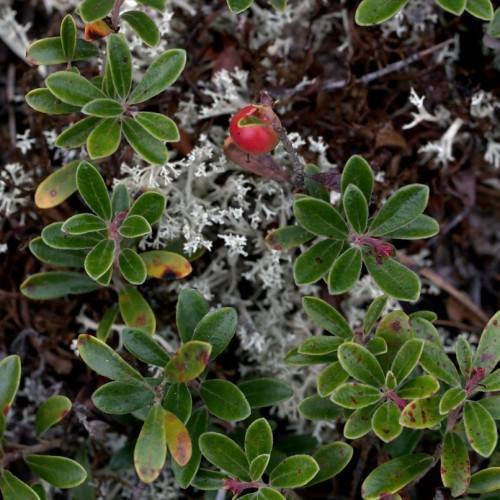
common bearberry
Arctostaphylos uva-ursi 'Massachusetts'
Also Known As - kinnikinnickCycle:
Perennial
Watering:
Minimum
Hardiness Zone:
2 - 7
Flowers:
Flowers
Sun:
Full sun Partial sun
Soil:
Sandy Loamy Rocky
Fruits:
Fruits In Summer Ready In
Edible:
Yes
Leaf:
Yes
Growth Rate:
Low
Maintenance:
Low
Drought Tolerant:
Yes
Care Level:
Medium
watering
Common bearberry needs moist soil but may rot from too much moisture, so watering should be done with care. Water the plant every 7-10 days, making sure the soil is moist but not soggy. During the summer months, additional water may be needed during periods of extended dryness. When watering, use enough water to soak the soil and trickle down to the roots of the plant. Allow the plant to dry down a bit between waterings. Over-watering can damage the roots and kill the plant, so use caution and be sure to adjust watering frequency accordingly.
sunlight
Common bearberry is a species of evergreen shrub that is native to northern North America and Europe. This plant prefers full sun but tolerates light shade, so it is best to give it at least 4 to 6 hours of direct sunlight per day, in the early morning or late afternoon. It is important to avoid exposing the plant to intense midday sunlight, as this can cause scorching and leaf burn. Bearberries can handle cooler climates, so it can still thrive in less hours of sun in the winter months.
pruning
When it comes to pruning common bearberry, the best time to do so is typically in late winter or early spring. This will help to ensure that the shrub is ready for the growing season and also gives it time to recover and grow in the late spring and summer months. The amount that should be pruned will depend on the size of the bearberry and the desired shape. Generally, however, it is best to remove 1/3 of the most recently grown branches. This will preserve the overall shape of the shrub while also allowing enough room for the bearberry to expand and fill in. If more drastic pruning is needed, it is recommended that this be done over a period of multiple years to ensure that the shrubrecovers properly.
